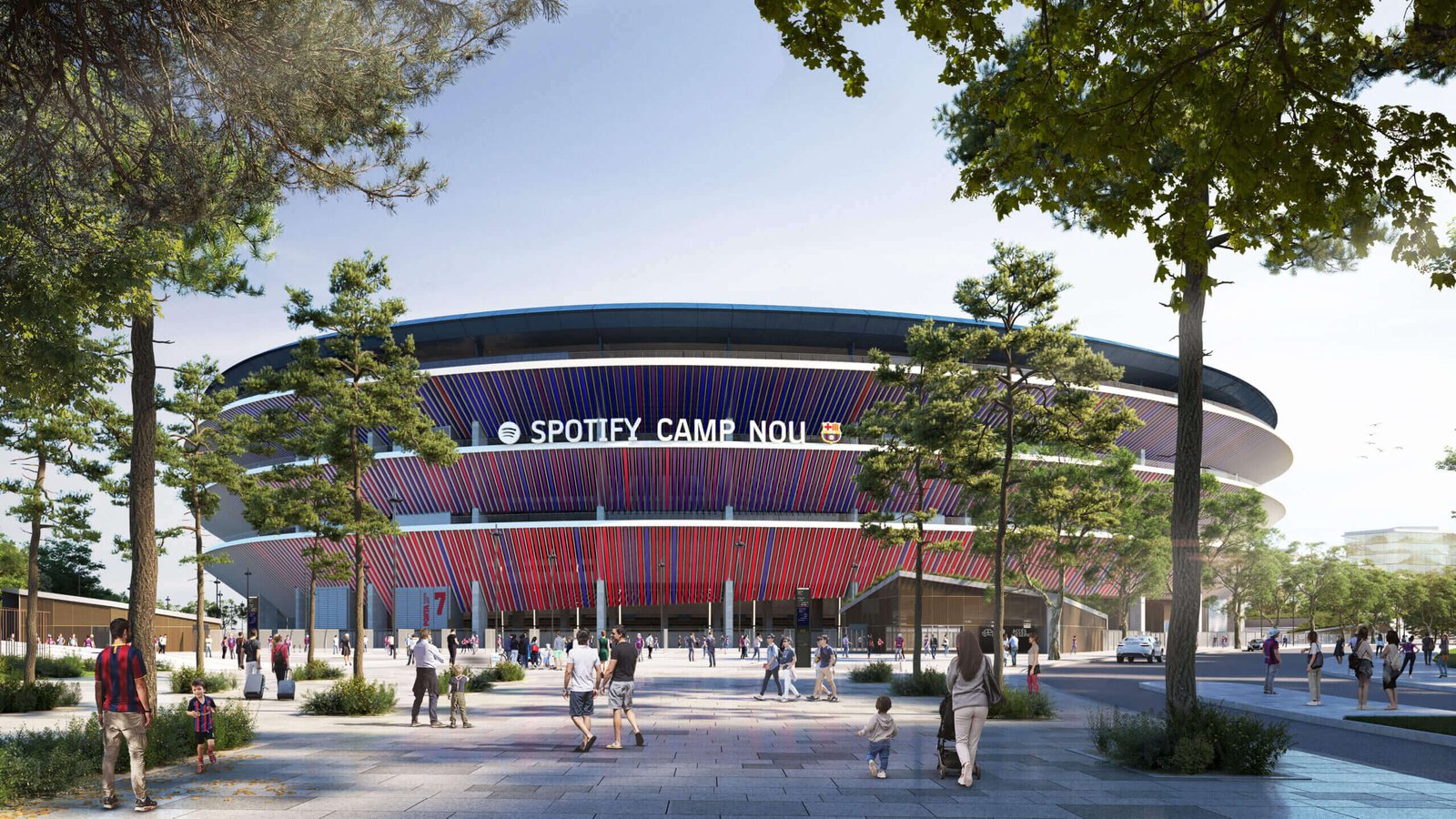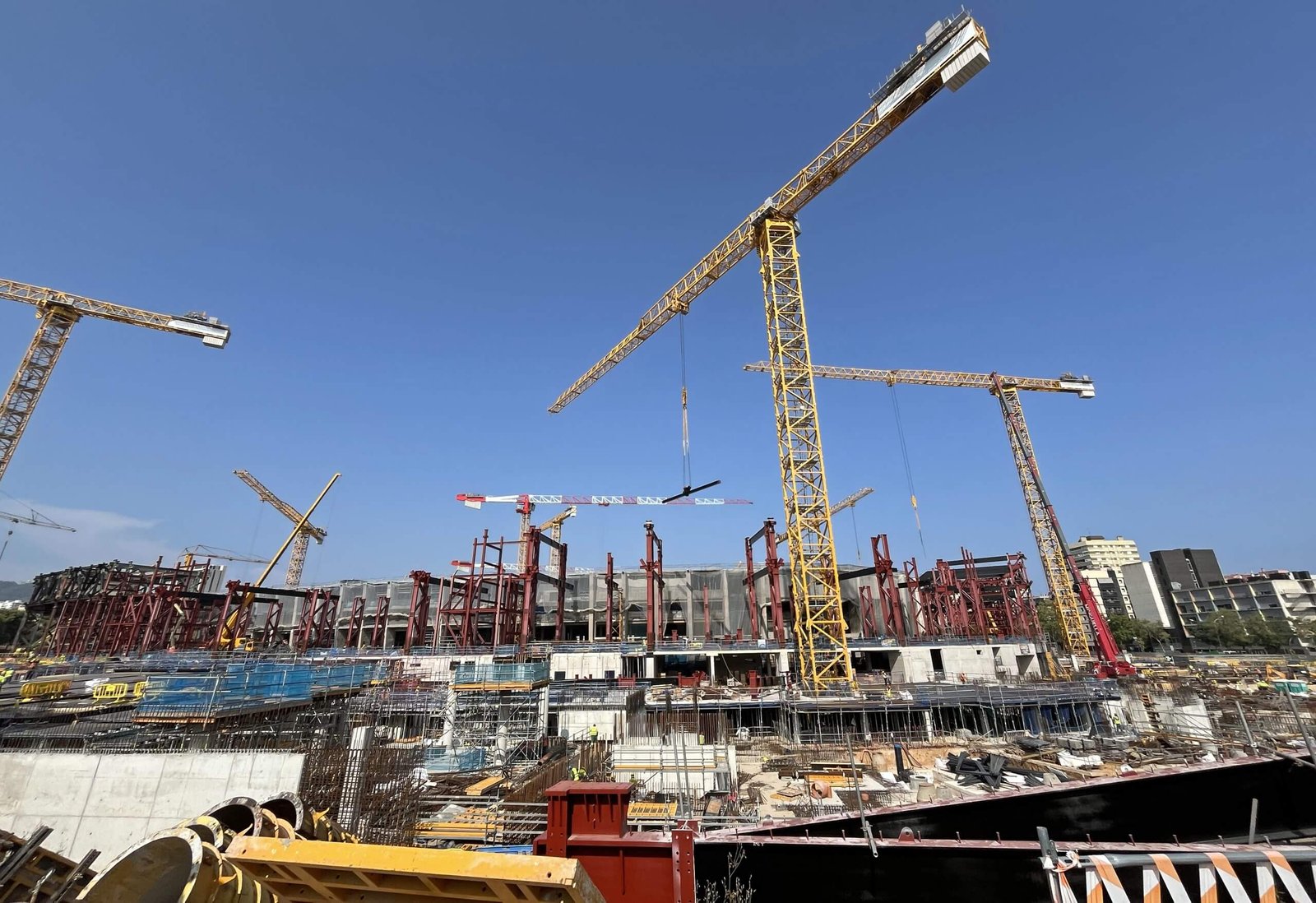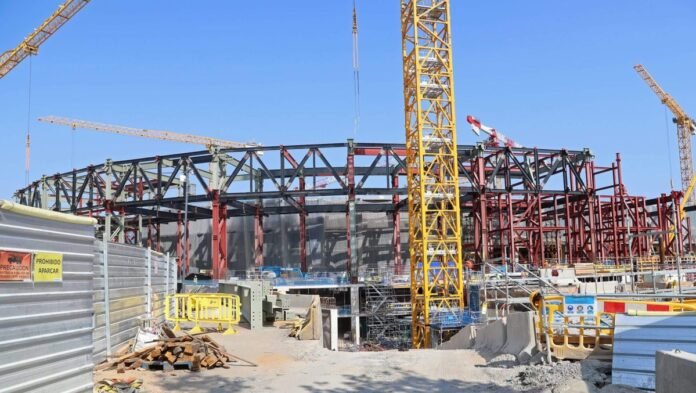The reconstruction of Barcelona’s iconic Camp Nou stadium began in June last year. Since then, the team have made the Estadi Olimpic Lluis Companys their temporary home.
Barca have been planning to return to the Camp Nou in time for celebrations marking the club’s 125th anniversary this year — the exact date falls on November 29 – and renovations are progressing relentlessly. Licences were recently granted to allow works around the clock, 24 hours a day, much to the disappointment of many neighbours (more on that to come).
In his recent statements on the subject, however, Barca president Joan Laporta has spoken only in vague terms of when the updated ground will be ready to host football again.
“We don’t want to set dates because it might happen later or it might even happen earlier,” Laporta said at a press conference after the close of the summer transfer window.
“You only have to pay a visit to the stadium (to see). Despite the obstacles, I believe that by the end of the year we will be able to come back. It keeps us very excited.”
Barca’s idea was always to return with the stadium only partially finished, at a reduced capacity. But walking around the site, it is hard to see how it will be ready to welcome 60,000 people (the final capacity will be around 105,000 when it is completed in 2026) in three months’ time.
Reconstruction at the Camp Nou. This picture is from August (Joan Valls/Urbanandsport/NurPhoto via Getty Images
This feeling contrasts with Barca’s insistence that they are still on track to meet agreed deadlines. A club spokesperson consulted for this article insisted the stadium is more advanced on the inside than it is on the outside. They repeated Laporta’s message — that moving in by the end of the year is the aim — but said it was difficult to set a date because of the “complexity” of the work.
Ana Ramon lives close by and is a president of the Camp Nou neighbourhood association. “They have told us that in December they will open, but it is not clear to us that it will happen,” she says.
“The first and second tiers are expected to be finished by December, but will all the entrances be finished and secure? I’m not so sure. There will be a lot of running around. Now we have accepted a night timetable again. Let’s hope this time they respect it.”
The “night timetable” Ramon refers to is a sore point for the group of locals she represents.

Barcelona’s redeveloped Camp Nou has a June 2026 completion date (courtesy of FC Barcelona)
Earlier this year, a timetable of permitted works was agreed at a meeting between the Camp Nou neighbours association, Barcelona city council and FC Barcelona. It allowed construction work to continue until midnight so long as it did not involve the most disruptive aspects (in terms of noise and light).
According to Ramon and the neighbours, there were various breaches of this and, after several episodes in which police were called, the timetable was altered so that work had to stop by 10pm.
A few weeks ago, the timetable was changed again. Now works can continue around the clock — although Ramon specifies there are several restrictions still in place, the most important being an agreement that night work cannot involve noise or light pollution.
Instead, what is allowed is the internal work such as wiring or painting, as well as other external construction that involves minimal noise, and only on the side of the stadium that faces a cemetery. The permitted hours for major renovations to take place are from 8am-8pm. With this, Barca hope to respect their deadlines and the local residents.
The locals most affected by the works are those living in the blocks of flats at Travessera Les Corts 98-100, along the stadium site’s southern boundary. They are only 35 metres from the ground, the closest residential buildings to Camp Nou. During the demolition, dust got into the building’s air conditioning units and left them beyond repair, Ramon said. She also said cracks in their building appeared and that a colony of pigeons which used to live at the old ground made a new, messy home of their facades.
“There is a rush, the sooner we finish, the sooner we will be calm,” Ramon says. “We want to finish, but they have to do their part to prevent the neighbours from being angry. People are very tired. It has been so hot this summer and last summer and some of the neighbours couldn’t open their windows.

The estimated cost of the Camp Nou redevelopment is €900m (Joan Valls/Urbanandsport/NurPhoto via Getty Images)
“They tell us that there are 2,400 people working and that it is very complicated to coordinate them all. They know we have an agreed timetable and we have to respect that. If they don’t make noise, it’s OK for them to work. But above all, they should respect the neighbours’ rest.”
Barcelona might well be in a rush. Last year it was estimated that playing the 2023-24 season at their temporary home on Montjuic would cost them about €90million (£75m; $100m at current rates), taking into account lost revenue and money spent to get the ground match-ready.
Meanwhile, the price of the Camp Nou reconstruction project was most recently estimated at €900million, with costs for the wider Espai Barca project — of which the stadium renovation is the most significant part — were put at €1.5billion. According to the official Espai Barca website, the project “involves remodelling all the facilities that FC Barcelona has in the Les Corts neighbourhood of Barcelona, and the Johan Cruyff Stadium at the Ciutat Esportiva Joan Gamper in Sant Joan Despí”.
Continuing on the sidelines now is the bureaucratic process to get all the permits required to host football matches again from Barcelona’s city council. Local police and emergency services will also have to check access, while validation from UEFA and La Liga will be needed.
The end of 2024 remains Barcelona’s target. Their final home match of the calendar year falls on the weekend of Sunday, December 22 (La Liga fixtures are not fully confirmed until closer to the time).
There are three months to go. If the deadline is not reached, Barca will have a whole month until the next home game. That will come against Valencia on the weekend of Sunday, January 26.
Everyone at the club — and those living around the ground — is hoping for a speedy conclusion. But this is just the first phase. The final completion date agreed with Turkish construction company Limak is the summer of 2026.
(Top photo: Joan Valls/Urbanandsport/NurPhoto via Getty Images)
Read the full article here


